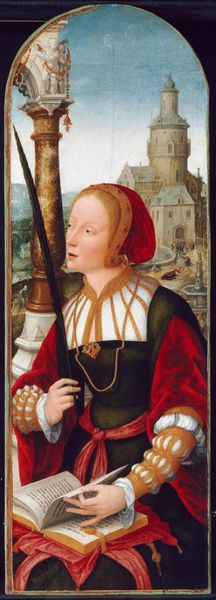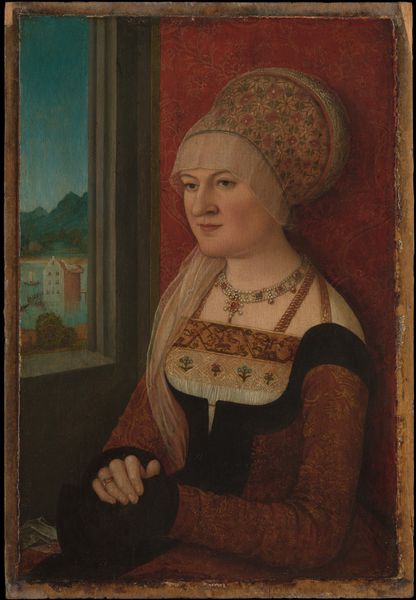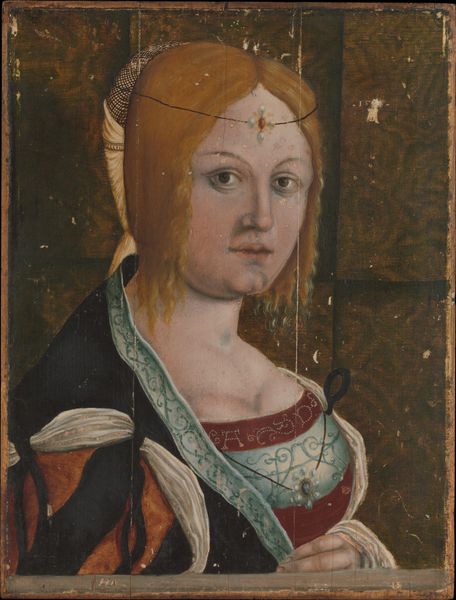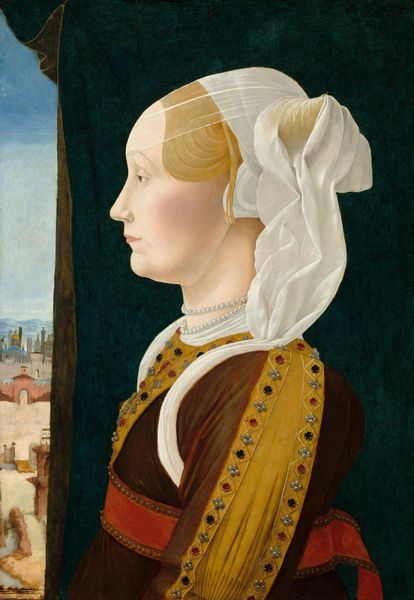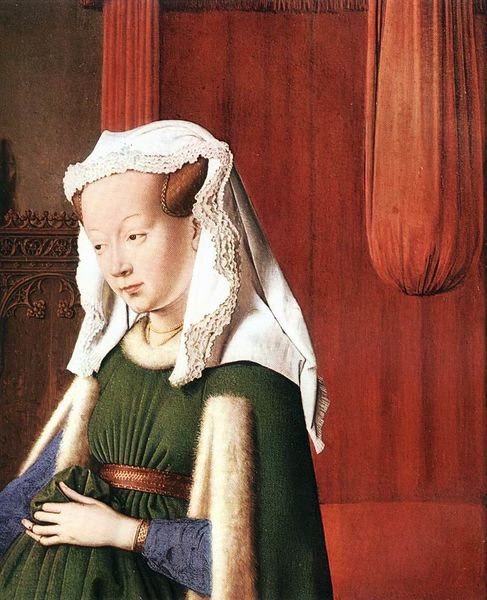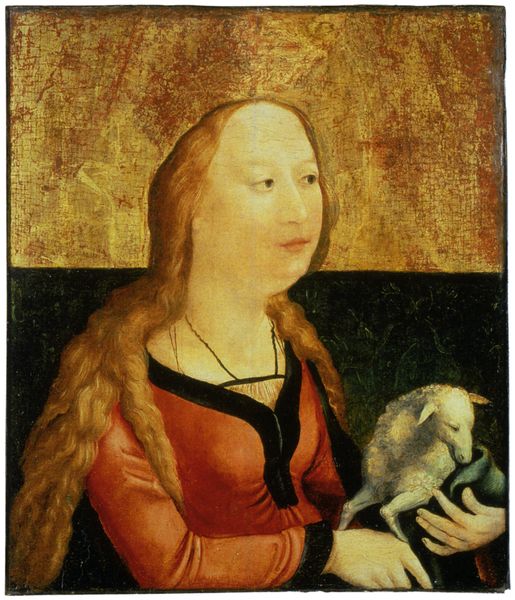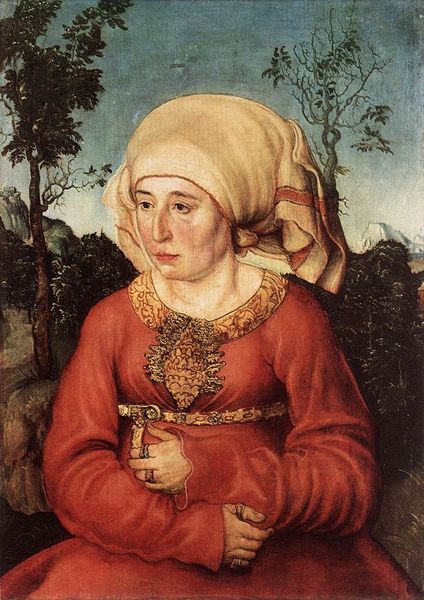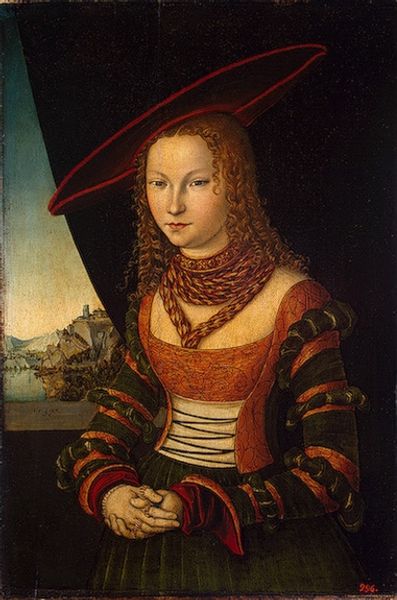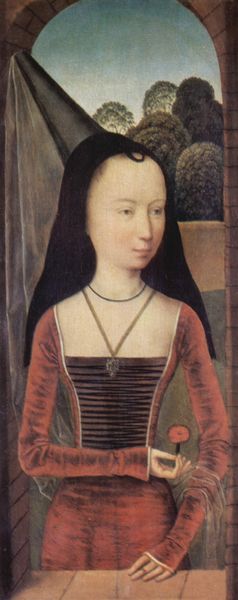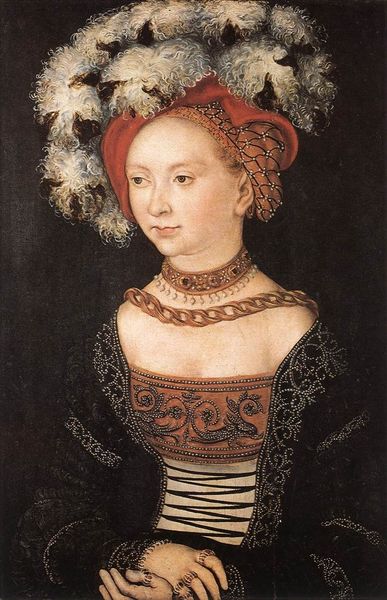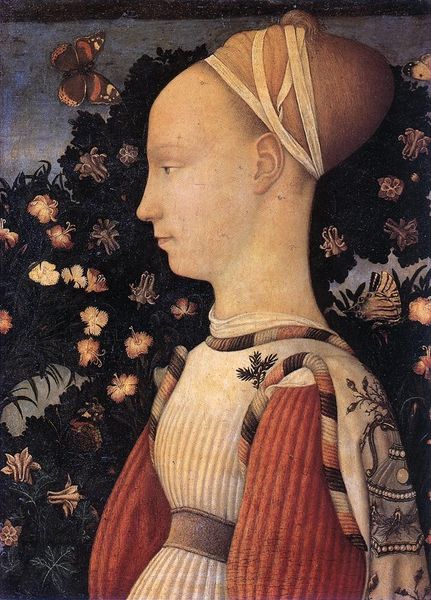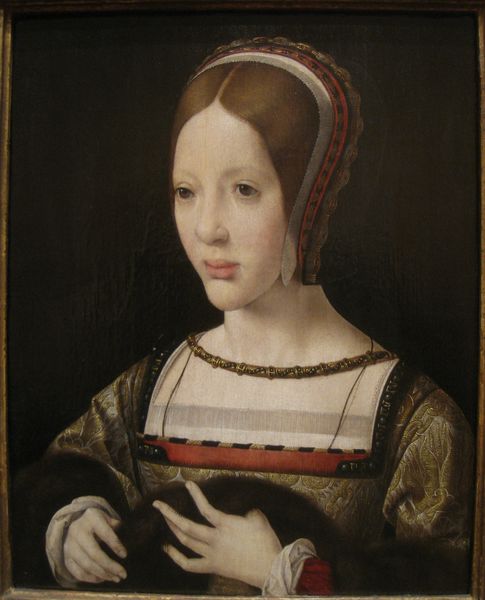
painting, oil-paint
#
portrait
#
painting
#
oil-paint
#
oil painting
#
northern-renaissance
Dimensions: 41 x 22 cm
Copyright: Public domain
Curator: This arresting panel painting before us is by Petrus Christus, created around 1455. It's called "Kneeling Female Donor," and the piece offers a striking example of Northern Renaissance portraiture rendered in oil. Editor: It feels remarkably modern, doesn’t it? Something about the direct gaze of the subject combined with that deep, rich red—it’s simultaneously calming and intense. Curator: Indeed. Considering donor portraits and the agency of the portrayed, especially of women, is critical. Look closely—this isn't simply a pious image. Consider the political weight held, that the subject and Christus agreed to produce her like this. What sort of class statement she's performing. The color of her robe, the details in her veil; nothing would have been happenstance. Editor: The folds in that gown are especially noteworthy—almost architectural in their precise arrangement. Color aside, that robe could be seen to act like armor. One striking thing I also see is that we get to see a slice of her world outside that window in the background. What do you read into the books behind her? Curator: Let’s unpack that connection to the outside world, since these details reveal clues about her position. The glimpse of the landscape not only provides depth but serves to position her within a larger sphere of influence, perhaps familial landholdings. Editor: The book really intrigues me, as a cultural object representing power at that time in history. It reminds me of the evolution of written language, how it moved from priestly script into the popular, expressive art form it can be today. Are you interested in the heraldry or any religious symbols at all? Curator: Her inclusion serves more than simple decoration. Symbols often work on various levels: her devotional stance, together with her wealthy appearance could also be regarded from a place of wealth as salvation. Considering the role of the painting too -- where might it be hung? Where did other kneelers interact with it? The relationship she built between herself and the world by creating the art says even more. Editor: You're right to point to context because without knowing where and how it would have been presented and viewed we lose the full intent behind it. The kneeling position says it all. In the end, for me, it all comes back to the idea of that potent red—visually signaling importance and dignity and drawing you into this woman’s private moment of reflection. Curator: For me, considering the painting, the context and the intent provides layers to what could simply be read as an innocent expression of piety; instead offering ways we think about how the woman understood herself to be understood in the 15th century and onwards.
Comments
No comments
Be the first to comment and join the conversation on the ultimate creative platform.
